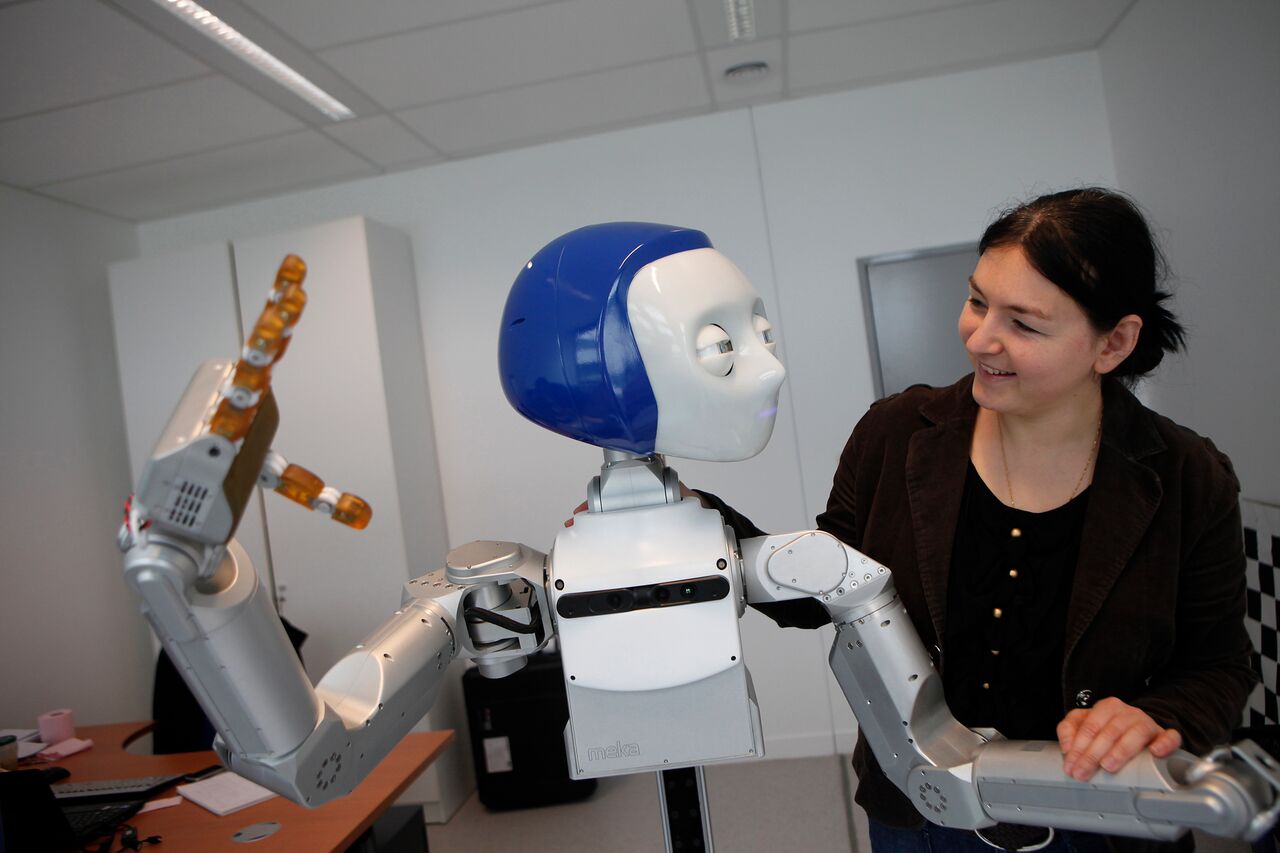What separates man from machine? Our internal complexities and circuitries are becoming more and more identical as scientists continue to build machines in man’s image. But that may not be where the similarities end anymore. A group of researchers from Université Paris-Saclay are pioneering a new approach in robotics by teaching robots how to show personality and emotion through touch and other senses.
Professor Adriana Tapus from ENSTA ParisTech, Université Paris-Saclay, is leading the charge to develop a humanoid robot sensitive to tactile stimulation. The Heroes Project – in collaboration with Dr. Moustapha Hafez from CEA Paris-Saclay, Professor Mehdi Ammi from LIMSI, and PhD student Pierre-Henri Orefice – addresses interaction via touch.
First results show that a robot is capable of inferring someone’s gender and personality in 75 per cent of cases simply by shaking hands.
“Giving robots a personality is the only way our relationship with artificial intelligence will survive. If we can simulate a human like emotional response from a robot we can ensure a two-way relationship, benefiting the most vulnerable and isolated members of our society,” says Tapus. “Our research will help the next generation of social robots to be polite, empathetic, and maybe have their own sense of humour.”
Robots serve many functions, from carrying out heavy-duty manufacturing processes to vacuuming floors. However, in recent years, robotics as a form of science and innovation has veered towards building anthropomorphised assistants to take on laborious tasks, previously handled by humans.
A recent global study from Genpact reveals that senior management is actually the group most resistant to adoption of artificial intelligence and robotics in UK companies, which is a contributing factor to companies’ inability to foster a culture that prepares them for the future.
The global study, Is Your Business AI-Ready?, reveals that 36 per cent of respondents from UK businesses believe senior management most strongly resists the adoption and usage of AI-related technologies, compared to just 3 per cent who say it is entry level workers. Workers, in comparison, were seen to be more accepting of the technologies. For example, the research revealed that 48 per cent of UK businesses believe their employees will be comfortable working with robots within the next three years, and 56 per cent of respondents expressed that their employees would be willing to learn new skills to take advantage of AI.
Tapus warns that there has to be more to robotics than building relatable pals that can take on all of our time-intensive tasks. In addition to an anthropomorphic appearance, robots must also develop social interaction strategies to be better integrated in human centred environments.
The ENSTA research team have developed robots to elicit different emotions and dominance depending on the situation and context. This includes, for example, adapting the arm stiffness and amplitude in a hand shaking interaction. Tapus’ research group at ENSTA have also studied emotion recognition. This was mainly part of a project designed for people suffering with Autistic Syndrome Disorder (ASD).
Individuals suffering ASD have difficulty recognising and understanding social stimuli. Past research shows they have affinity in interacting with robots, so the researchers decided to put that hypothesis to the test. They investigated how those with ASD recognise emotions in various forms, from real humans to robots and human avatars. This work was done in collaboration with three centres working with individuals with ASD; MAIA Autisme and IME Notre Ecole – two associations for children and adolescents with ASD – and FAM-La Lendemaine, a residence for young adults with ASD.
These potential new therapies could help autism sufferers become more social. This work on autism and robots was part of Pauline Chevalier’s PhD thesis.
This work also means that robots have the potential to become carers for our ageing population, work with humans to complete complex tasks and intervene in situations where human contact is welcome; the likes of which has only been possible in science fiction.






